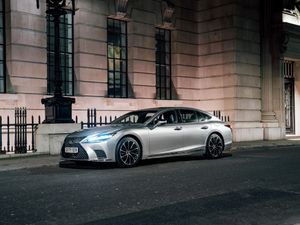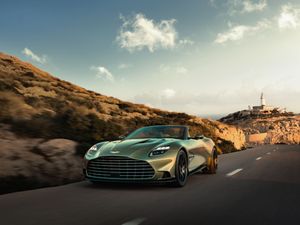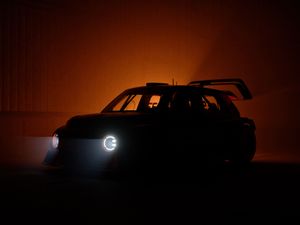The incredible technology that goes into a car’s metallic paint job
Lexus has outlined the levels it has gone to to develop new paint jobs for its premium cars.

What goes into a car’s paint job? You might never have considered it, but long before the paint is sprayed onto a car’s bodywork by a robotic arm, it has undergone years of high-tech development.
Japanese premium car brand Lexus has given an insight into the process required to develop a new paint, and it might surprise you what technological innovations go into making metallic paint a bit deeper and shinier.
Lexus began pursuing the ‘ideal metallic look’ around the turn of the century, and the first public look into its progress came in 2003 when it released Cosmo Silver for its flagship LS saloon. A much brighter, more ‘fluid’ appearance was achieved by using larger aluminium flakes and controlling their orientation for a more even arrangement.

Next, the firm developed ‘sonic paint technology’ to improve its multi-layer paint process. Sonic Titanium and Sonic Silver were the first examples of its use in production, on the IS and GS saloons in 2012.
This involved compression of paint layers to 12 microns thick, making the aluminium flakes even closer together and in a more uniform pattern, improving shine. Although the process takes more effort to paint, Lexus says it requires fewer bakes in the drying process, making it more environmentally friendly.
In 2018, a more dense paint appearance was achieved using a thin metal paint layer, which created a metallic accent in the bodywork’s edges, working in combination with a dark grey layer. Finally, the sonic paint process was developed so the 12-micron layer would contract to just four microns in the baking process, improving its reflective nature.

The latest evolution is found in Lunar Silver on the current-generation LS. Lexus says it is very selective with the type of aluminium used, and this is then deposited as a thin-film vapour that is smoothly applied to the bodywork at a thickness of just one to two microns.
The Japanese car maker has long focused on the importance of colour. In 2017, it released a special edition LC with a paint called Structural Blue. It used a lengthy paint process designed to mimic the colour of the Morpho butterfly.
Lexus says conventional paint reflects less than 50 per cent of incoming light as a visible blue colour, but with Structural Blue this was around 100 per cent.

In 2019, BMW went in the opposite direction and created an X6 with Vantablack paint. This is the darkest man-made material on Earth, absorbing 99.965 per cent of light, and is a nanotechnology material developed by Surrey NanoSystems in the UK.
Because it absorbs so much light, the human eye struggles to make out details in the shape of Vantablack objects, creating the illusion of a 2D shape.





